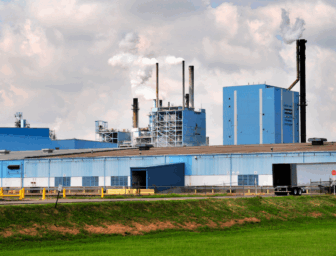For Immediate Release
August 30, 2012
Contact:
Diana Dascalu-Joffe, Chesapeake Climate Action Network, 703-772-2472
Leah Kelly, Environmental Integrity Project, 202-263-4448
150+ Baltimore Citizens and Environmental Groups Tell the Maryland PSC: Proposed Energy Answers waste-to-energy incinerator’s air pollution permit does not comply with the federal Clean Air Act
CURTIS BAY, BALTIMORE — A proposed trash-incinerating power plant in Curtis Bay does not meet standards required under the federal Clean Air Act, according to environmental groups and over 150 Baltimore residents in comments submitted today to the Maryland Public Service Commission (PSC).
The PSC approved an insufficient permit for the Energy Answers (EA) facility on August 6, 2010, but, because construction was not started within 18 months, Energy Answers had to seek an extension of the permit and must demonstrate that it meets current standards for air quality and pollution control. CCAN and EIP attorneys presented testimony at the hearing stating the facts: that the EA permit and its air pollution provisions do not comply with the Clean Air Act. Improvements have been made to the permit as part of the extension request, but more are required.
Energy Answers’ permit currently allows it to emit more mercury per year than any coal-fired power plant in the state. Mercury is a potent neurotoxin and can cause neurological impacts in infants whose mothers consume mercury-contaminated fish while pregnant or nursing. The groups are asking that the mercury limit be lowered by at least 90 pounds per year, making it similar to the mercury limit for a new waste-to-energy plant in Florida.
The EA plant is also currently allowed to emit 600 tons of nitrogen oxides per year. Nitrogen pollution has been linked to the demise of the Chesapeake Bay and it causes the formation of ozone, which aggravates respiratory diseases such as asthma. Installing better controls at the Energy Answers facility could reduce nitrogen oxides emissions by 450 tons per year. These controls are being required for a new waste-to-energy plant in Florida and are already in use at waste-to-energy plants in Canada and Europe.
If permitted, the EA plant will be constructed in the already over-burdened Baltimore neighborhood of Curtis Bay, just one mile from two schools. EA’s permit for this facility was originally fast-tracked for approval by the Maryland state agencies.
“I am concerned about the effects of this plant on the health of my family and my neighbors. We already have many industrial sources in this neighborhood, and many people here have asthma. If this plant is built, we deserve the strongest possible permit in order to protect our health,” said Linda Stewart, a citizen who lives about a mile from the plant site in the Brooklyn neighborhood.
“The Energy Answers plant is not being required to install the best pollution controls possible, even though those controls are used at waste-to-energy plants in Europe and are being required for some plants proposed in the U.S. South Baltimore residents deserve the same protections, especially since the Curtis Bay area is already overburdened by air pollution. Our groups are speaking on behalf of the over 150 Baltimore residents that signed citizen comments urging the PSC to significantly strengthen this air pollution permit,” said Diana Dascalu-Joffe, senior general counsel for the Chesapeake Climate Action Network.
“Emission limits for mercury and a number of other pollutants can and must be lowered for the Energy Answers facility. The plant is also currently allowed to emit potentially unlimited amounts of pollutants during startup, shutdown and plant upsets, in violation of the law and directives from the EPA. The permit must be revised to correct these deficiencies,” said Leah Kelly, an attorney with the Environmental Integrity Project.
The PSC and the Maryland Department of the Environment are charged with deciding whether to revise the proposed permit to improve pollution controls at the plant.
###




